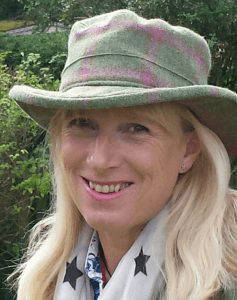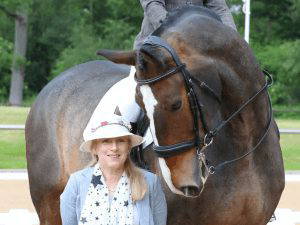Episode 2.
The 2nd part in our Dressage series ‘Behind C’ with top judge Alison Duck
 When I judge a test whether that is British Dressage or Para, the combination that will achieve the highest marks is the partnership that works with harmony. A horse that is confident with his rider and surroundings will be able to fulfill the scales of training and directives of the level of test that they are riding.
When I judge a test whether that is British Dressage or Para, the combination that will achieve the highest marks is the partnership that works with harmony. A horse that is confident with his rider and surroundings will be able to fulfill the scales of training and directives of the level of test that they are riding.
British Dressage judges undertake a long examination route in order to judge at the level they are qualified up to. The training is time consuming and expensive. Exams are hard with many not succeeding. Competitors often don’t appreciate this or realise that unaffiliated competitions don’t always use BD judges and may be using a completely untrained person to judge. This can confuse competitors who are starting out. You may have been scoring well unaffiliated and see your scores drop back once you compete under BD rules, this is something some riders find hard to accept at first but you will find that your scores will settle.
All BD judges are trained to judge by using the scales of training and then following the directives of the level of test they are judging.
So when judging the most important point is that the paces are correct and the horse is working evenly in each pace. Basically it must be level and even in all its gaits.
If the above is correct then I will be looking at the tempo ( speed of the rhythm) this must stay constant throughout. One of the most common mistakes is speeding up on the straight and slowing down for small circles and lateral work.
I am then looking for suppleness. How well corners are ridden tells the judge so much. Corners ridden correctly produce suppleness and set the horse up for the next movement.
The scales of training all work together. I am looking for a horse that can maintain the same tempo in the movements because it is supple enough to be able to do so.
The horse should be happily accepting the riders contact and doing what it is asked willingly. This 3rd scale of training is sadly the one that causes the most problems partly because the above hasn’t been achieved. The acceptance of the contact is progressive with the important point being that the head is on or slightly in front of the vertical and the poll being the highest point. There is a big difference to what I would expect from a horse starting out to a horse working at the higher levels. Roundness and suppleness develops as a horse progressively improves and is physically and mentally able to work at the level it is at.
So, if you get the basics correct as listed above the horse will be working correctly, you then need to understand the directives of the test. These are laid out clearly on all BD test sheets. They basically include riding the movements correctly. A 10 meter circle must be a 10m circle. If it is not it can not be rewarded with a high mark.
 A correct way of going with the requirements of the directives should all be understood and achieved before a higher level test is attempted hopefully resulting in a happy successful partnership, with great scores.
A correct way of going with the requirements of the directives should all be understood and achieved before a higher level test is attempted hopefully resulting in a happy successful partnership, with great scores.
Search
Recent Articles
- The Good, The Bad and The Ugly of Coaching
- Does your horse need more energy, especially when competing?
- Grade 1 International Para Dressage Rider Di Green- Why Lexi Needed a Year Off
- Louise Blanch – Driving Towards New Horizons with the Continued Support of the Para Equestrian Foundation.
- Kissing Spine – Prevention or Cure?
Categories
- Advice Hub
- Athlete
- Carriage Driving
- Dentistry
- Dressage
- Endurance
- Eventing
- Farrier
- Featured
- Featured Horse Ads
- Featured Posts
- Horse Racing
- Horse's Mouth
- Horseball
- Hunting
- Le Trec
- Leisure Riders
- Mounted Games
- Nutrition
- Polo
- Polocrosse
- Reining
- Rescue & Rehabilitation
- Show Jumping
- Showing
- Tack Room
- Team Chasing
- The Pony Club
- Therapy
- Training
- Vaulting
- Veterinary




